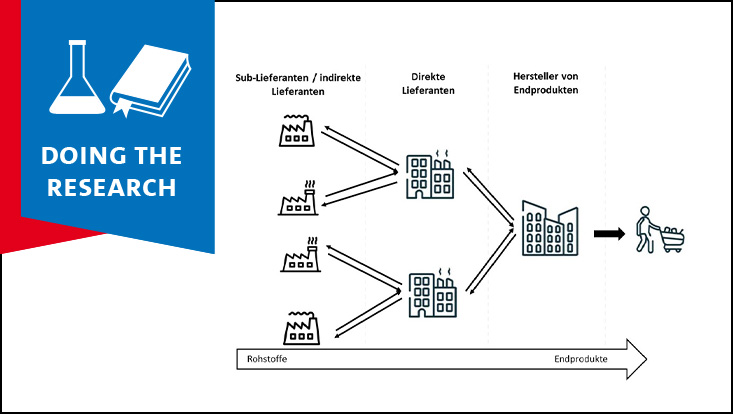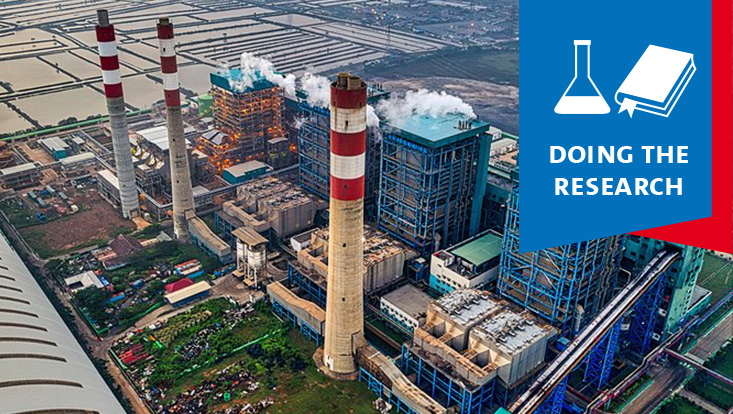International cooperationUnderstanding “Seebären” and Other Pheomena: Researchers Calculate Global Tsunami RiskDoing the Research series
7 November 2024, by Anna Priebe

Photo: University of Hamburg/Behrens
Tsunamis do not only occur in distant oceans but also in the North and Baltic Seas. Prof. Dr. Jörn Behrens, professor of numerical methods in geosciences in the Department of Mathematics and the Cluster of Excellence Climate, Climatic Change, and Society (CLICCS), investigates how to calculate these events and their impacts. Together with international colleagues Behrens aims to develop a global tsunami risk map.
How do you treat tsunamis mathematically?
I conduct simulations to establish how a wave is going to develop and behave based on data measured via mathematical formulas and models—either within an early warning system or a preventive risk assessment.

The so-called “Seebären” are one of your focus areas. What’s the secret of this phenomenon?
“Seebär” is a traditional term, previously also used in academia and deriving from the word “bore” for wave. There are several “Seebären” throughout the year in the North and Baltic Seas. Most of them go unnoticed, as they set off small waves only, but they are tsunami-like events. They are triggered, however, not by earthquakes, but by certain meteorological conditions, such as weather fronts—small-scale spatial pressure variations in the atmosphere which affect the ocean. That’s why we call them meteotsunamis. We also use these calculations for tsunamis in other regions of the world.
How do researchers from different countries collaborate on this subject?
We founded the Global Tsunami Model Association from a networking project funded by the European COST Association. This project proved very successful and helped us identify current blind spots in tsunami research. But the focus was on Europe, and we are aiming to cover all potentially affected regions, such as Asia or the western coast of America.
The new cooperation is to help us better understand and predict tsunami phenomena. So far, only tsunamis triggered by earthquakes can be predicted somewhat accurately. We now want to also achieve this for waves triggered by volcano eruptions and or landslides in the seabed.
Do you mean the causes vary but the consequences are similar?
Exactly. The different trigger mechanisms help build a so-called gravity wave in the ocean. It is extremely fast, hardly loses any energy, and can thus expand without bounds. Just imagine a sound wave which does not move the air but passes on individual impulses only. This is similar to how a wave behaves in the ocean—you hardly notice it in deep water. It only gets dangerous in shallow water when it rises high and its energy translates into movement.
Wherever it hits land, there will be flooding and devastation depending on the wave’s strength. We therefore not only examine the causes of these waves from natural sciences perspectives, but take an multidisciplinary approach, including geographers, engineers, and social scientists to establish possible impacts in certain places and feasible precautions.
What’s the goal?
We aim for chain of action models—from trigger to wave arrival time—which are exact enough for creating risk maps of all coastal areas across the globe. The latter are to indicate the probability and intensity of tsunami events.
At the North Sea, for example, there is a very low risk of tsunamis caused by an earthquake. The probability of damage due to 10-meter tall meteotsunamis is minimal. Combined with coastal protection measures, hardly any damage is to be expected. At the Baltic Sea, where there are no high dykes, the effects can be quite different. This also applies to the Adriatic Sea, which is prone to regular meteotsunamis and waves triggered by earthquakes, while there is hardly any coastal protection. The immediate risk of damage is greater there, especially due to the densely populated coastline. All this is factored in for our maps.
To date, only small-scale tsunami risk maps are available.
Does this imply you need as much data as possible?
Yes, sometimes it is not quite as easy to get hold of data. Among other things, calculations require very exact topographic maps for calculating how a wave will behave in coastal areas or on land. Hence, in many cases, only small-scale tsunami risk maps are available yet.
Currently, our next project aim is to develop clear rules for their calculation. These would enable us to obtain useful results when dealing with rather scarce data. On this basis, we then want to conduct a detailed global risk analysis.
In emergencies, it is also helpful to draw on previously calculated scenarios. I was in Indonesia after the 2004 tsunami to develop the German-Indonesian Tsunami Early Warning System for the Indian Ocean (GITEWS) under the aegis of the GFZ German Research Centre for Geosciences in Potsdam. Now, there is a database with calculations for various regions, causes, and further parameters. In case of an incident, you look which scenario from our database corresponds best with data measured in various places and take this as a basis for warning the municipalities.
How is this specific application taken into account and put into practice within the new cooperation?
We take a co-design approach. This means, we do not only develop our methods and models further, but we also work closely with various societal stakeholders, such as insurance companies, local municipalities, or international organizations like UNESCO. How can you clearly communicate calculated tsunami risks? And how can you derive measures and provide support for their implementation? These questions will also be covered by our research.
Doing the Research
There are approximately 6,200 academics conducting research at 8 faculties at the University of Hamburg. Many students also often apply their newly acquired knowledge to research practice while still completing their studies. The Doing the Research series outlines the broad and diverse range of the research landscape, and provides a more detailed introduction of individual projects. Feel free to send any questions and suggestions to the Newsroom editorial office.


